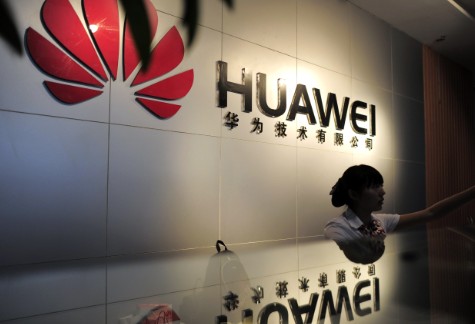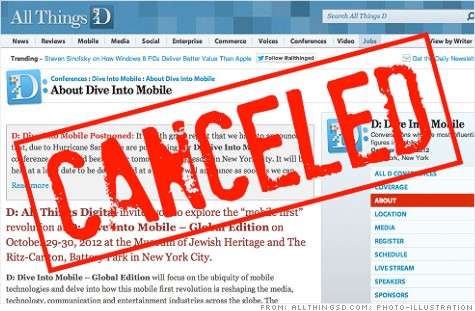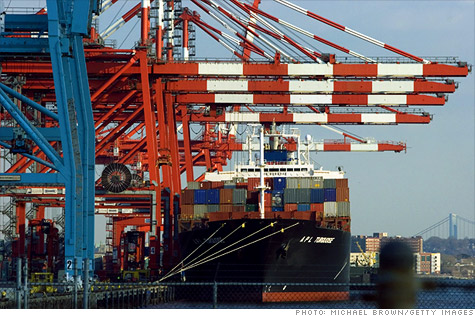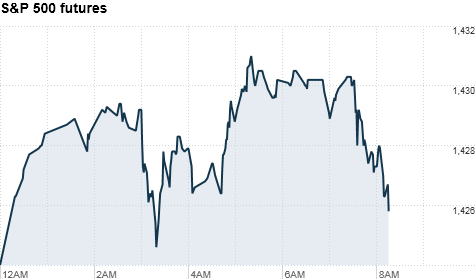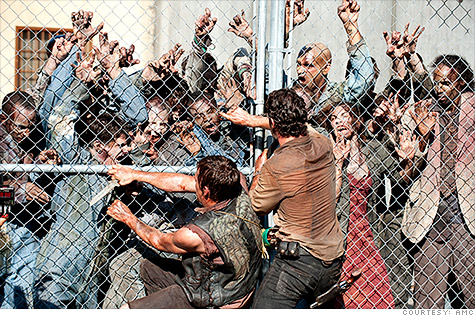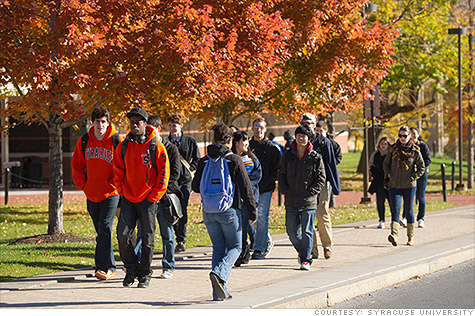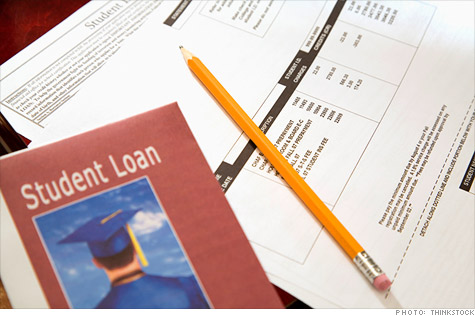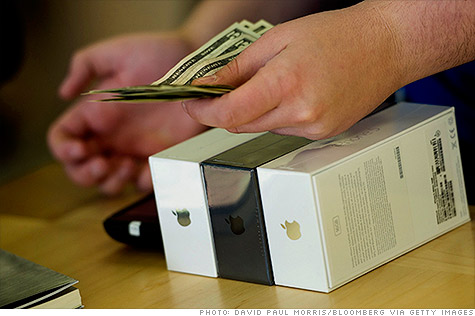
Jim Haslam II: "I wanted to be in business for myself."
(Fortune) -- If you do a lot of driving on the nation's highways, there's a good chance you've been a customer of James "Jim" Haslam II. Starting with one gas station in 1958, Haslam has built the largest chain of travel centers in North America. Knoxville's Pilot Flying J now has 496 outlets -- combination gas stations and retail stores -- that produced about $30 billion in sales in 2011, the latest data available from the closely held company. Over the years Haslam, now 81, has kept the company in the family. His son Jimmy Haslam III, 58, is chairman of Pilot and, at presstime, was about to be approved as the new owner of the Cleveland Browns football club. Former Pepsi (PEP, Fortune 500) exec John Compton is the new CEO. Another son, Bill, 54, is a former Pilot president and now the Republican governor of Tennessee. (The family is a big donor to Mitt Romney's presidential campaign.) Haslam's story:
My upbringing was typical of American children born in the 1930s. I was the youngest of three siblings and the only boy in my family. Our mother was a homemaker, and our father worked as a salesman for the old Studebaker company and served as an officer in the Army in both World War I and World War II. He said cars were so slow to sell back then that he'd take a car off the freight train and drive it around from dealer to dealer until he sold it. Then he'd go back to the train to get the next one. We lived in Philadelphia until I was in the 11th grade; then I finished high school in St. Petersburg, Fla.
I played all kinds of sports and got a scholarship to play football at the University of Tennessee, where I was captain of the 1952 team. The things that help one succeed in football will also help one to succeed in business. In football, you've got a coach who has to get the best players, put them in the right position, make them practice hard, and execute a game plan. If the players do all those things, you win. Business is the same thing.
After I received my B.S. in finance from the University of Tennessee, I went into the Army. I served in Korea for 13 months, after the war ended, and was a company commander in a combat engineering company. When I got out in 1955, I was offered three jobs -- being a high school football coach, selling advertising for a TV station, and being a wholesale salesman for Fleet Oil. The coaching job wouldn't start paying until summer, and I wasn't sure TV was going to make it. So I went to work for Fleet Oil, which was getting into the wholesale business, in LaFollette, Tenn. After I had spent six months in sales, the owner, Sam Claiborne, said, "Come learn about the operations side of the gas station business." He started the chain of Sail Oil gas stations, and let me run it.
I wanted to be in business for myself, and after two years I decided to start Pilot. We wanted to call the company Jet, but that trademark was taken. We decided to name the company Pilot because the word conveys being in charge. Sam had taught me all I knew, so I agreed not to build any locations near his gas stations for three years.
MORE HOW WE GOT STARTED: The Blue Man Group
In 1958, there were a lot of independent, cut-rate stations on the border between Tennessee and Virginia. Because of the tax situation, gas and cigarettes were cheaper in Virginia. A station became available in Gate City, Va., and we bought it for $6,000. It did well from the start, so we were lucky. By 1965 we had 12 locations in Virginia, Tennessee, and Kentucky. We always chose places where there was a market with good volume, which back then was usually small towns.
Our team would travel to a town and get up early to look at traffic patterns. We wanted to be on the right-hand side of the road on the far corner, past the traffic light, so drivers could get in and out easier. At the time there were the big company gas stations -- Exxon (XOM, Fortune 500), Mobil, Shell (RDSA), Texaco -- and then there were the independents like us. There were gas stations on every corner, and it was dog eat dog. In the 1960s, to stand out in customer service, we'd find out customers' names, then put a piece of tape with their name on it inside the gas cap so that when they left, the attendant could say, "Thank you, Mrs. Smith." Today we get their name from the credit card. But that's how you say thank you to people. You use their name.
Gas was 27.9¢ a gallon when we started in 1958. In the '60s and '70s there were a lot of price wears, and we'd lose money at times, selling gas at cost. It was difficult starting from scratch. We borrowed from a number of banks to start each location.
We didn't have a lot of capital, and Marathon Oil (MRO, Fortune 500) saw that we were expanding. Marathon was looking for people who would buy their products, and it offered to buy half our business, for $200,000 in 1965. It also loaned us $4 million to build new gas stations. The stations were little 200-square-foot buildings with restrooms on the side and six gas pumps. All we sold were drinks, Lance cookies, cigarettes, and motor oil. We repaid the loan in the mid-1970s.
In 1974 my first wife, Cynthia, died. Our oldest son, Jimmy, was 20 when he took her seat on the Pilot board in 1975. He was a senior at the University of Tennessee and started working full-time for the company in 1976. In the early 1970s we figured out we'd have to sell more stuff to pay for the properties. So we built convenience stores. We added food and the things one can buy in convenience stores today. The challenge one always has is, How will we get sales? One has to have a clean place that looks good, gives customers good value, and has good people working there.
MORE HOW WE GOT STARTED: The Lucky Jeans guys
Today we have a sophisticated Pilot Flying J University for training. But back then we'd have district managers who would train people one by one on everything from customer service to watching the numbers. We would try to get 50% of our profit from petroleum and 50% from nonpetroleum products. Even today we want our people to be conscious of how much profits and margins should be.
One of the secrets to success is adding new products and creating new ways to do business. We have to keep changing because our customers are always changing. In 1980 a friend of ours told us about Ken Pritchard, a former football player at the University of Tennessee, who had built a new concept in Slidell, La., that was a convenience store with gas pumps in front and diesel fuel behind it. We decided to do the same thing.
So in 1981 we built our first travel center. President Reagan had just deregulated trucking, so there was a proliferation of small trucking companies that became good customers. We filled a real niche. In 1988 we bought out Marathon Oil, got the company back to ourselves, and kept building travel centers.
I'm really proud of what Pilot has become. Our reputation is built on cleanliness and customer service. It varies by store, but maintenance is supposed to check every 30 minutes to make sure the restrooms are clean. In the past other managers and I would go into the stores and get a feel for what was going on. Friends would tell us if they ran into a dirty restroom somewhere. Now we do spot checks through mystery shoppers.
In 2001 we again partnered with Marathon (Marathon Ashland Petroleum's Speedway SuperAmerica), and merged our travel centers. Together, we had 232 travel centers, and then we bought out Williams' Travel Centers for $189 million in 2003, and added 40 more locations.
MORE HOW WE GOT STARTED: Zappos' silent founder
Marathon has always been a good partner. It provided us with the products to sell and the financing. We've always been the operating partner, and it let us operate independently. In 2008, Marathon was disposing of some of its marketing assets, and told us it wanted to sell. So we got together with CVC Capital Partners and bought Marathon out for $700 million. The family retains 60% of the company.
In 2010 we felt it was logical to merge with Flying J because our locations meshed. Today Pilot Flying J has 496 travel centers in the U.S. and Canada. We also kept 40 convenience stores in Knoxville.
Pilot has been a family business that suits our energy and interests. When I turned 65 in 1995, my older son, Jimmy, became CEO, and I became the chairman. My son Bill was president from 1995 to 1999 and is now the governor of Tennessee.
Now, as founder and chairman emeritus, I visit stores as much as I can, to greet people and tell them how important they are to us. The most important customer is the one walking in the door right now. I want to make sure we keep this culture going. Everything starts at the top in a business. As a leader, one has to set the example.
My advice
Do the right thing. If an employee needs medical treatment for a family member, give him time off. If a customer is dissatisfied with a product, take it back and make him happy. Be a good corporate citizen. People will remember what you do.
Hold people accountable. We have monthly goals. If our people don't make them, they have to explain why. When they make their goals, we reward them.
Keep an eye on the competition. We'll have a mystery shopper visit one of our stores, and he'll mystery-shop one of our competitors. If the competition wins, we look at why it was better than us, and we make sure it never happens again.
This story is from the October 29, 2012 issue of Fortune. 
First Published: October 22, 2012: 6:30 AM ET
![]()
